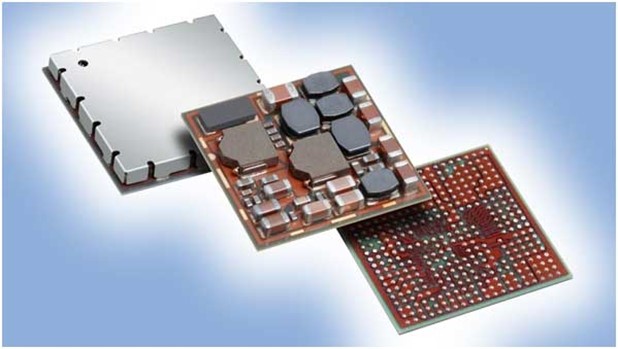Smartphones have become an irreplaceable commodity in our daily life. Be it professional or personal life, every task in some way or another is related to these devices. To cater to our increasing dependency, these smartphones are becoming more powerful each day. Powerful processors, more storage, and an improved camera are the features every buyer looks for.
Apart from the operating system, consumers also use a variety of applications that use different sensors and processing power from our device. All these processes require a power source to operate, which, in the case of mobile devices, is a battery. These batteries must be charged from time to time to keep the processes up and running. Hence, longer battery life is another important criterion for selecting a smartphone. Technology related to battery-life optimization has not developed at the same pace as other verticals in the smartphone industry.
Increasing the battery life of a smartphone can be done by both hardware and software techniques. Making changes in the hardware could also mean installing a larger battery, but that would mean increasing the smartphone's size. Designing efficient power-management units and power-efficient integrated circuits (ICs) is a feasible solution. Additionally, software improvements in the operating system to manage battery-intensive applications and make judicious use of the available battery is also seen as another potential solution to the problem. In this article, software and hardware techniques to optimize the battery life of smartphones will be discussed.
Software Power-Management Techniques
The enormous popularity of modern-day smartphones with higher processing power and faster Internet connection has also increased the number of data and hardware-intensive applications in both Android and iOS. Applications like WhatsApp, Instagram, Skype, etc. not only demand CPU resources but also require a full-time Internet connection. Studies have revealed that Internet usage constitutes about 62% of the power consumption in an idle state. Moreover, 3G/4G consumes more battery as compared to Wi-Fi, when small-sized packets of data are exchanged frequently.
Several software techniques like data compression, packet aggregation, and batch scheduling can be used to optimize battery life. Random data transmission by different applications on a smartphone uses up more battery, hence a batch-scheduling mechanism can be used to maximize the sleep time and minimize the frequency of wake-up by recurrent transfer of data by applications.
Data offloading from 3G/4G to Wi-Fi is another effective way of improving battery life, as Wi-Fi is more efficient compared to 3G/4G for data transfer. Another software technique is to offload higher computational tasks, like CPU-intensive software, onto the cloud for computations. This strategy can be used to operate software like Office 365 and MATLAB on mobile devices, but it involves an extra cost of communication between the cloud and the device. Application State Proxy (ASP) is another technique in which the background applications, which not only use CPU resources but also Internet data, is suppressed and transferred onto another device and brought up onto the device only when requested.
Hardware Power-Management Techniques
Different embedded systems, chips, processors, and sensors are integrated to work in synchronism to make these mobile devices smart. Each of its hardware devices consumes power as it operates. Of all these electronic modules, the transceiver module consumes the largest amount of power as it remains active for a long time to receive incoming packets. Various software techniques have been discussed to optimize the data transfer of these packets. Digital signal processors (DSPs) are key components of these transceiver modules, which process a large amount of data for multimedia usage. Reducing supply voltage to these DSPs is a direct method of reducing power consumption.
To extend battery life, the DSP for a smartphone requires a low-power and high-throughput multiply accumulation (MAC) during the talking period and a low-power intermittent operation during the waiting period. A 1V multi-threshold CMOS circuit meets these requirements with a simple parallel architecture and a power-management technique using an embedded processor that is used alongside a modified DFF suitable for power-supply control.

Image credit: Electronics Maker
Apart from processors and transceivers, the screen is another major consumer of battery power. LED screens that require backlights are more power-consuming and thus can be replaced by more power-efficient displays like OLED, which consumes less power. OLED, unlike LED and LCD displays, does not require backlighting and each pixel in OLED has its own self-contained source of color and light. So black images on OLED will be completely black, but the same is not true for LED and LCDs.
Research has shown that the degradation of battery life over time can also be due to poly vinylidene fluoride (PVDF), which is a binder used to prevent exfoliation of the graphite anode in batteries. PVDF is non-conductive and dissolves in the electrolyte because of the poor adherence rate. A new n-type conjugated copolymer is Bis-imino-acenaphthenequinone-paraphenylene (BP) binder has also been proposed; it has outperformed the conventional PVDF-based binders, increased the battery life, and prevented degradation as the battery ages.
Researchers have also proposed a dynamic power management unit (PMU) that collects information about different parameters of the processor and the input/output devices while running different applications on the smartphone. The PMU would then propose predictive power-aware management schemes based on the collected information.
Prospects of Smartphone Power Management
The pace at which the smartphone industry is progressing in terms of processing power and other features is much faster than that of batteries. Researchers are now focusing on power-management techniques by software as well as hardware means to manage the available battery energy efficiently. The different techniques discussed in the article are promising in nature and are being used to increase the battery life of smartphones by multiple folds.

